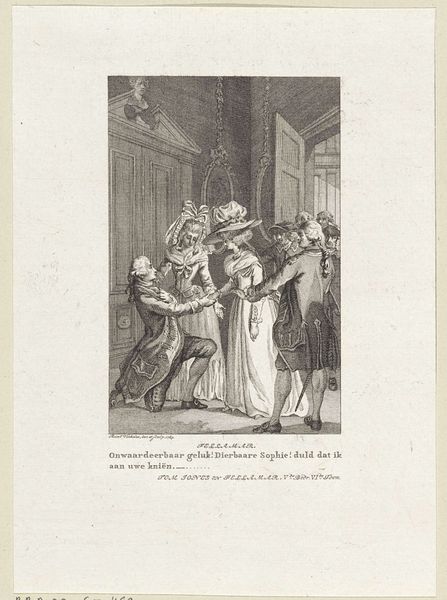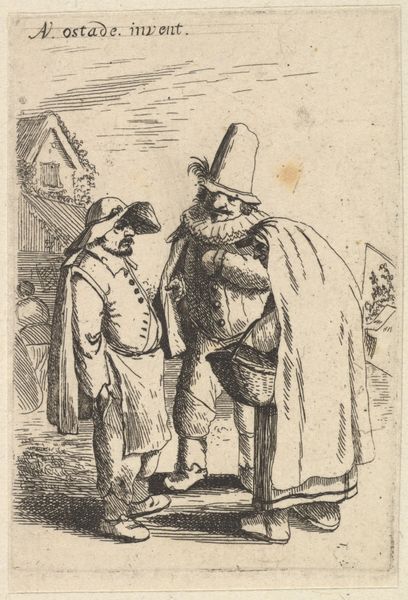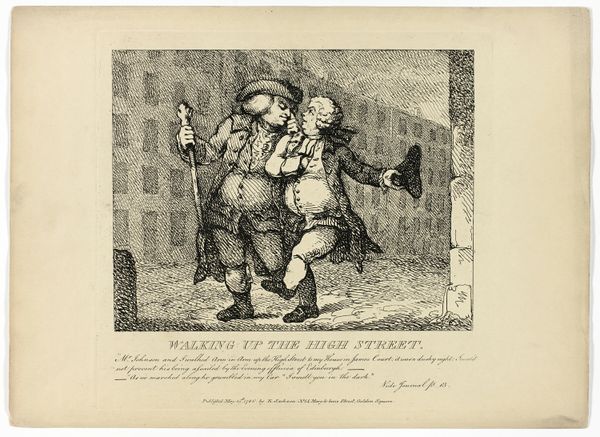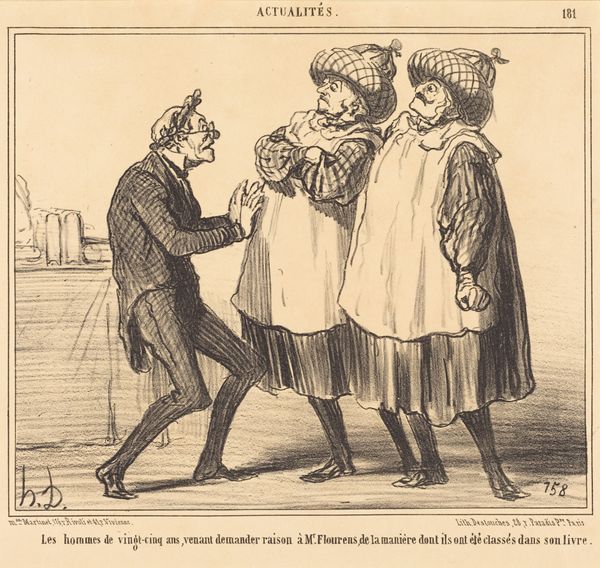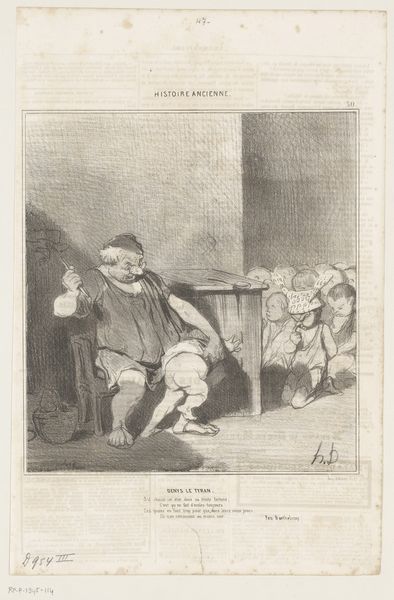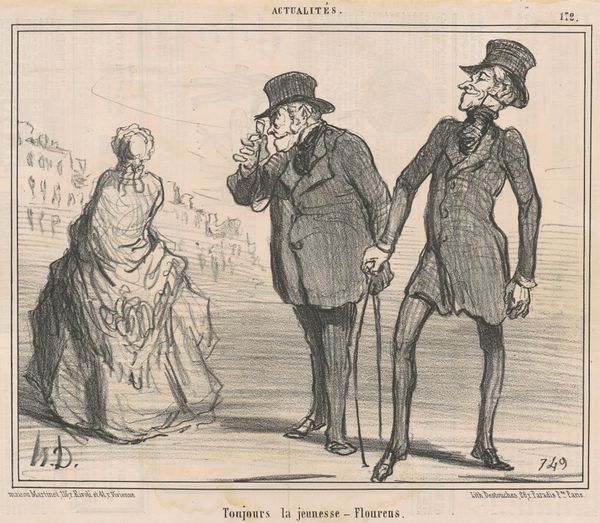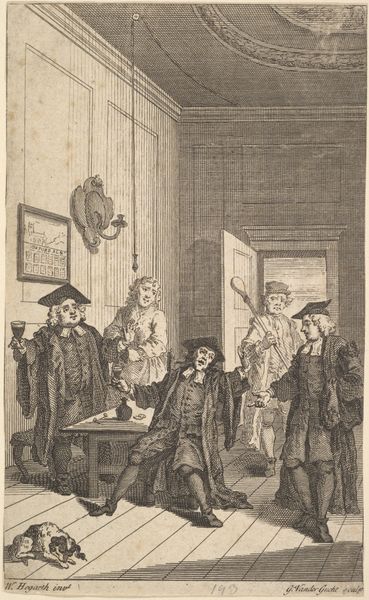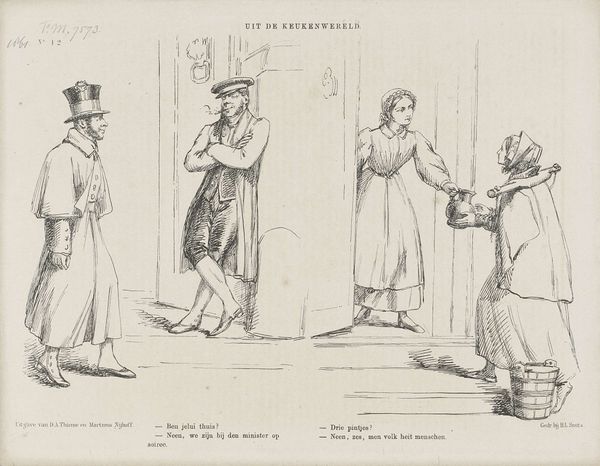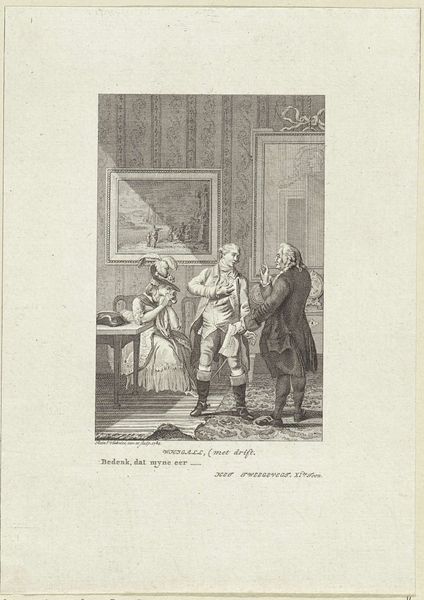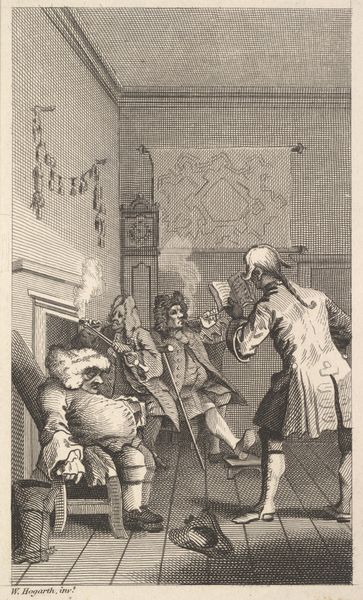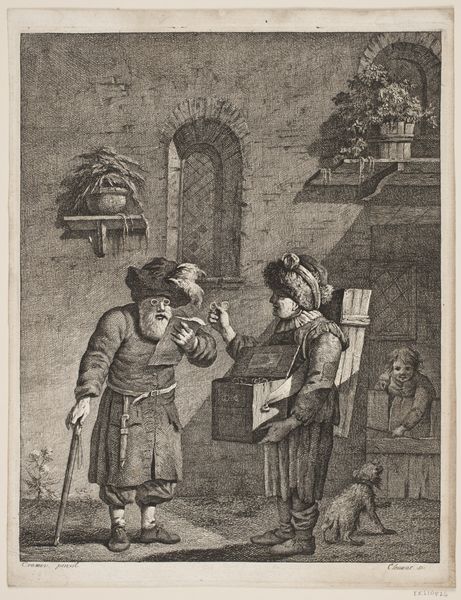
The First Meeting of Matthew Bramble and Humphry Clinker, an illustration from Tobias Smollett's "The Expedition of Humphry Clinker" (London, 1793), Vol. 1. 1793 1793
0:00
0:00
drawing, print, etching, ink, engraving
#
portrait
#
drawing
#
narrative-art
#
neoclassicism
# print
#
etching
#
ink
#
genre-painting
#
history-painting
#
engraving
Dimensions: Sheet (trimmed): 4 1/2 × 6 7/16 in. (11.5 × 16.4 cm)
Copyright: Public Domain
Editor: Here we have "The First Meeting of Matthew Bramble and Humphry Clinker," an engraving made in 1793 by Charles Grignion, I, after Thomas Rowlandson. The scene feels very theatrical to me; the figures seem posed. What do you make of this encounter? Curator: It's more than just theatrical, it's performative, isn't it? Think about the social structures at play here. The novel this illustrates, Smollett's "Humphry Clinker," is deeply concerned with class distinctions and the often-absurd rituals of social interaction. This isn't just a meeting; it's a negotiation of power, a visual representation of the anxieties surrounding social mobility in 18th-century Britain. Consider the figures' clothing, their gestures, how does this reveal these concerns? Editor: Well, Bramble looks stout and assured while Clinker is much more disheveled and… unsure. There's definitely a contrast. And I guess the women in the background might represent different classes, too? Curator: Exactly. This is a key point! Now, let’s think about who had access to education and cultural capital in this period. Engravings like these weren’t just illustrations; they were accessible forms of social commentary. They disseminated ideas about class, gender roles, and societal expectations to a wider audience. Can you see how something like this could have shaped public opinion and reinforced certain social hierarchies? Editor: So it's not just a funny scene, but a statement about the social landscape? I hadn't really considered that. Curator: Precisely. Art always exists within a broader social context. By analyzing those power dynamics we start to understand that. Editor: I never really considered the engraving as such a commentary of 18th-century society! Thank you!
Comments
No comments
Be the first to comment and join the conversation on the ultimate creative platform.


